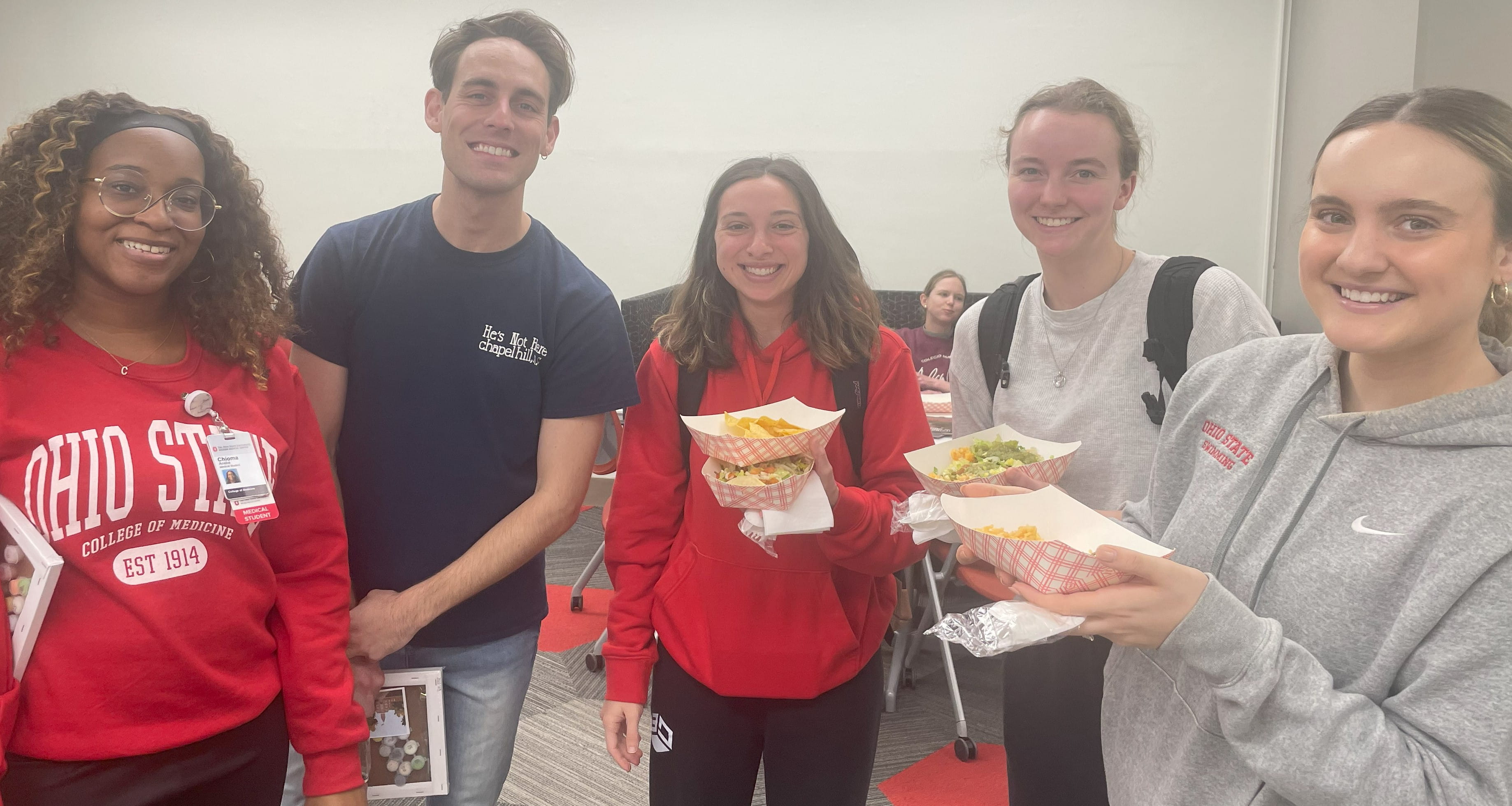Time Out Tuesday creates space and support for students preparing for Step 1
 For second-year medical students, preparing for Step 1 of the United States Medical Licensing Exam is a dedicated time to review everything they’ve learned in the first two years of medical school.
For second-year medical students, preparing for Step 1 of the United States Medical Licensing Exam is a dedicated time to review everything they’ve learned in the first two years of medical school.
“Studying for Step 1 is an ULTRA-marathon, with 4-6 weeks of needed dedicated study time” says Kim Tartaglia, MD, professor of internal medicine and director of the Part Two Academic Program at The Ohio State University College of Medicine. “We help students pace themselves and take breaks to refresh and rejuvenate along the way.”
Dedicated study time is also a time of reflection.
“Students get to see how much growth has taken place in their learning,” says Melissa Quinn, PhD, clinical associate professor in the Division of Anatomy at The Ohio State University College of Medicine and co-director of the Part One Academic Program. “Time Out Tuesday (TOT) gives them space to take a break, eat together and interact with each other, faculty and staff, in a different way.”
The college’s Student-Life team created TOT to respond to the need to improve our learners’ mental health and overall wellness while maintaining the requisite emphasis on content review and test preparation.
For Morgan Doty, the puzzles, games and interesting topics of conversation, which don’t compare or discuss practice test scores, made a positive impact on her productivity preparing for Step 1.
“It really helped to take my mind off a lot of the dread associated with such a major exam,” Doty says. “And it provided one of the last few opportunities for our class to be together as one before we split off into separate rotations.”
Doty says that TOT also delivered academic advising and learning assistance from college support staff and leaders in real time.
Another learner, Shannon Lavender, says while dedicated study period was an intimidating experience for her, at TOT, she felt supported by the administration and staff of the medical school during the challenging time. It also gave her a break from studying and the chance to connect with others.
“TOT kept me sane during dedicated, and often I looked forward to the next week’s theme, the food, activities and special guests,” Lavender says. “I am so thankful for the Student-Life team’s hard work to provide this support and kindness. Their dedication doesn’t go unnoticed.”
Kim Doran, MS, learning specialist at the Ohio State College of Medicine and TOT co-creator, says for her, the most rewarding part of the program is the ability to show learners that she cares for them and she sees them as more than just students.
“I’ve gained their trust. They ask questions and come by even when they just need a pep talk,” Doran says. “This time is grueling for them and knowing that there is someone who cares oftentimes is just enough to keep them pushing through.”
Medical student Bryce Dzubara agrees that support from learning specialists and counselors helped him keep his head above water and stay on track to take Step 1.
“Kim, Anne (Hinze) and Lora (Eberhard) deserve a huge shoutout for the work they put in to make this happen,” Dzubara says.
Another student, Brad Loomis, says the purposeful breaks from studying and time spent in TOT helped him refresh and be more energetic and focused when he returned to studying for the exam.
“It was refreshing to see how much information I’d retained and what I still needed to revisit and focus on to pass the test,” Loomis says.
Given the great success of TOT, other programs in the Ohio State College of Medicine and Wexner Medical Center regularly reach out and ask to participate. The team presented the findings from more than 75 completed surveys that were gathered at the end of the 2023 TOT program, at the 2023 Medical Education Learning Specialists conference.
“Five other institutions beyond Ohio State have followed our initiative to establish their own TOT programs,” Doran says. “To share our learned experience, we’ve compiled impactful information we share with education teams at Ohio State and across other academic institutions.”
Carol R. Bradford, MD, MS, FACS, dean of the Ohio State College of Medicine, recently shared a presentation on TOT at the Association of American Medical Colleges Council of Deans spring meeting.
“This year’s program now includes a student panel of learners who participated in TOT last year. They will provide peer-to-peer support, answer questions and discuss concerns of current learners engaging in test preparation,” Dr. Bradford says. “Over 100 learners attended our event in early March."
The event was sponsored by Dr. Tartaglia, the Division of Hospital Medicine and Laxmi Mehta, MD, FACC, FAHA, professor of medicine and faculty director of the Gabbe Health and Well-Being Program at the Ohio State College of Medicine. They hosted a flower planting session, coloring activities and shared videos on physical activities led by health coaches.
“When we work hard to use our brains, taking a break by getting physical activity or using our hands by gardening or crocheting, can allow us to reset and make our studying more effective,” Dr. Tartaglia says.
“This initiative is us throwing a pebble in the water and creating a ripple effect,” Dr. Quinn says. “It’s a true wellness program that many can be modeled off of.”
